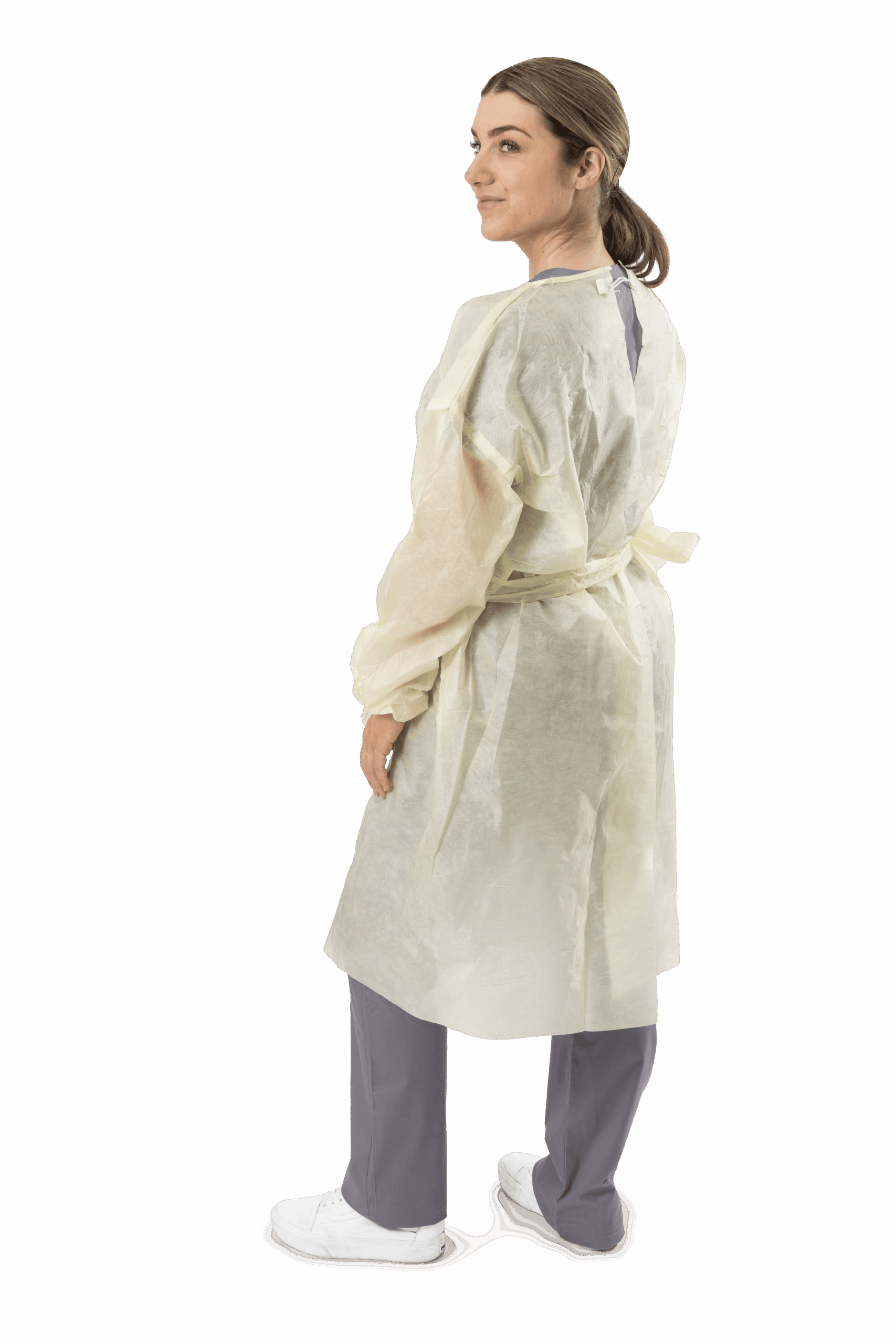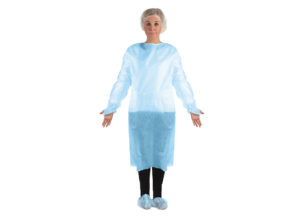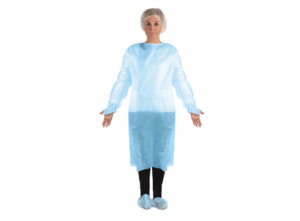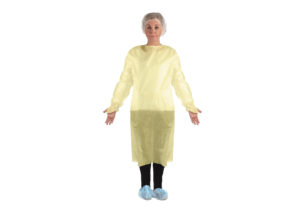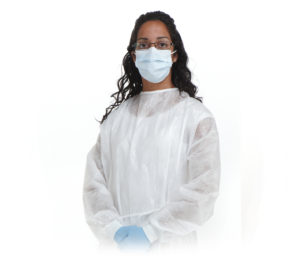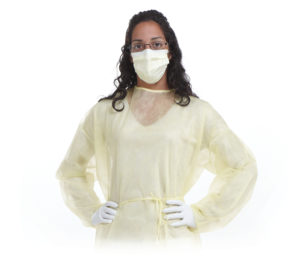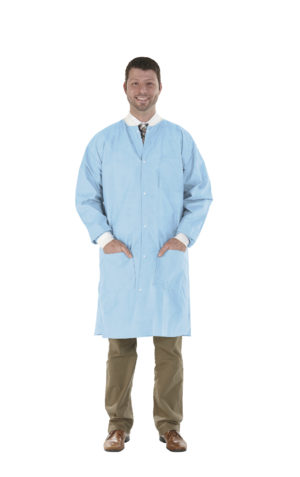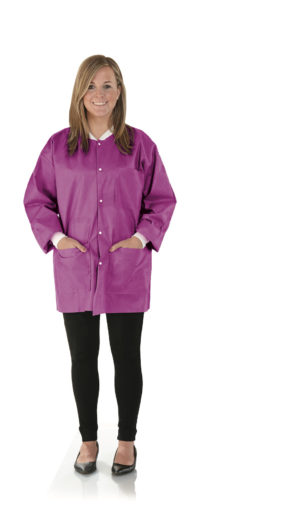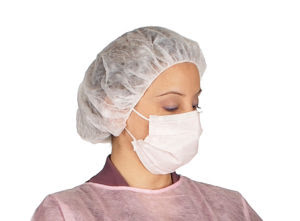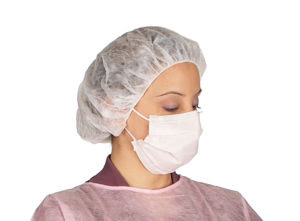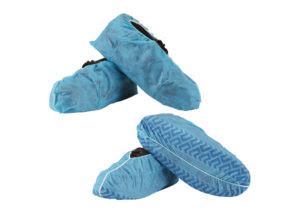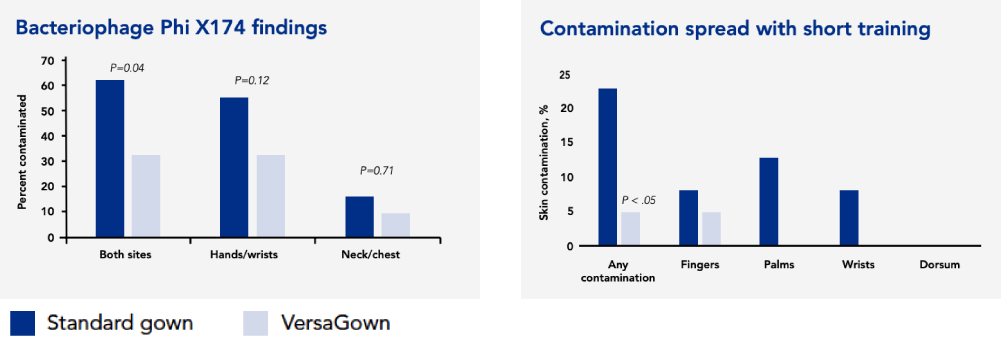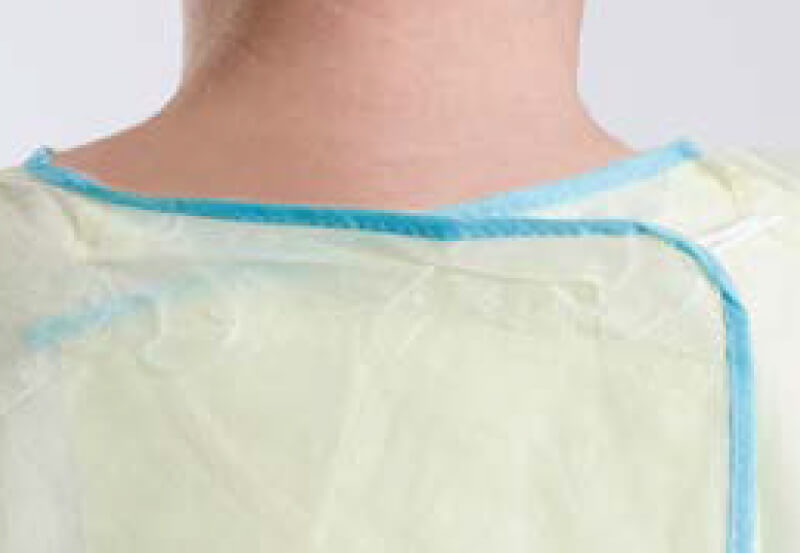Medicom has you covered from head to toe
Medicom offers a comprehensive selection of protective apparel, including our patented VersaGown with Flexneck™ technology, AAMI PB70:2012 compliant gowns, overhead gowns, impervious gowns, thumb loop gowns and chemotherapy gowns, as well as lab coats and vests, coveralls and sleeve covers, bouffant caps, shoe covers, beard covers and more.
Types of Gowns
There are two types of medical gowns:
Isolation gowns: Protective apparel used to protect the clothing of healthcare professionals, visitors, and patients from the transfer of microorganisms and body fluids in patient isolation situations
Surgical gowns: Sterile textile gowns worn by healthcare professionals who are performing activities in a sterile environment
empty title
- Critical zones
- Regulatory requirements
Isolation Gowns
- All areas of gown except bindings, cuffs and hems must meet the highest liquid barrier protection level for which gown is rated. All seams must have same liquid barrier protection as rest of gown. Should cover as much of body as appropriate for intended use.
- In the U.S., Level 1 and 2 isolation gowns are regulated by FDA as Class I medical Devices. Level 3 isolation gowns are regulated by FDA as a Class II medical device that requires a 510(k) premarket notification.
Surgical Gowns
- Front of the body from top of shoulders to knees and the arms from the wrist cuff to the shoulder
- In the U.S., surgical gowns are regulated by FDA as a Class II medical device that requires a 510(k) premarket notification All surgical gowns must be labeled as such.
Isolation Gowns
Surgical Gowns
All Gowns and Apparel (24 products)

Explore Medicom’s full range of medical apparel, including patented VersaGown® with Flexneck® technology, AAMI PB70:2012-compliant gowns, chemotherapy gowns, lab coats, coveralls, caps, shoe and beard covers, and more.
Gowns
Why healthcare professionals prefer Medicom protective apparel
Medicom protective apparel provides reliable barrier protection and:
- Premium materials that keep wearer cool and comfortable
- Unique designs that provide customized fit and ease of movement
- Special features that ensure secure closure and easy donning and doffing
- A wide variety of styles, lengths, sizes, colors and fabric weights
- Consistent quality, durability and fit
ANSI/AAMI gown protection levels
| Level 1 | Level 2 | Level 3 | Level 4 | |
|---|---|---|---|---|
| Risk level | Minimal risk | Low risk | Moderate risk | High risk |
| Recommended use | During basic care, standard isolation, cover gown for visitors or in a standard medical unit | During blood draws, suturing, in the intensive care unit (ICU) or a pathology lab | During arterial blood draws, inserting an intravenous (IV) line, in the emergency room (ER) or for trauma cases. | During long, fluid intense procedures, surgery, when pathogen resistance is needed or infectious diseases are suspected (non-airborne) |
In the clinical setting, PPE compliance plays a critical role in reducing cross-contamination. However, did you know that standard medical isolation gown designs often have limitations that can increase your risk of contamination while also slowing down workflow?
Even with training and clear protocols, risk of contamination can occur due to the clinical reality of a fast-paced environment and workflow where every second counts. The securing of traditional ties around the neck and behind the back can be cumbersome, and sometimes a step that is overlooked. Standard cuffs can leave the hands exposed and ride up – leading to further exposure around the wrist. The risk of contamination can occur especially during gown removal.
Do you face similar challenges?

Cumbersome, time-consuming donning
Traditional neck closures that slow down your workflow. Unfastened gowns that result in infection prevention and control compliance issues.

Insufficient hand/wrist coverage
Standard cuffs that only cover a small portion of hand or poor quality thumb loops that tear or ride up - exposing skin.

Prone to tearing
Over-the-head gowns that tear easily during donning or doffing.

Risk of contamination during removal
Unfastening neck ties can transfer pathogens to the neck and chin.

Non-intuitive design
Ill-fitting gown designs that limit mobility and comfort.
While precautions are taken to reduce the risk of cross-contamination by following proper donning and doffing protocols, it may be of interest to note that a change in gown design can have a significant impact in reducing the risk of contamination.
In fact, the design of a gown can help to reduce contamination at the hands/wrist and neck/chest areas by as much as 50%.¹
Using a gown with extended cuffs in combination with brief training can help to reduce contamination at the hands/wrist by as much as 78%.²
If you are changing your gown multiple times a day, that’s multiple opportunities for exposure to potential risk. As a healthcare provider focused on caring for others, don’t you deserve the peace of mind that your gown is providing the protection you need – from donning through doffing?
Small design changes can make a BIG impact.
Independent studies have shown that gowns designed to allow easy removal at the neck and with increased skin coverage and snugness at the wrist can significantly reduce contamination of personnel during PPE removal.¹,²
Thoughtful, evidence-based gown designs do more than reduce the risk of contamination. They improve workflow efficiency, simplify training, and make proper PPE use more intuitive, helping support consistent IPC compliance.
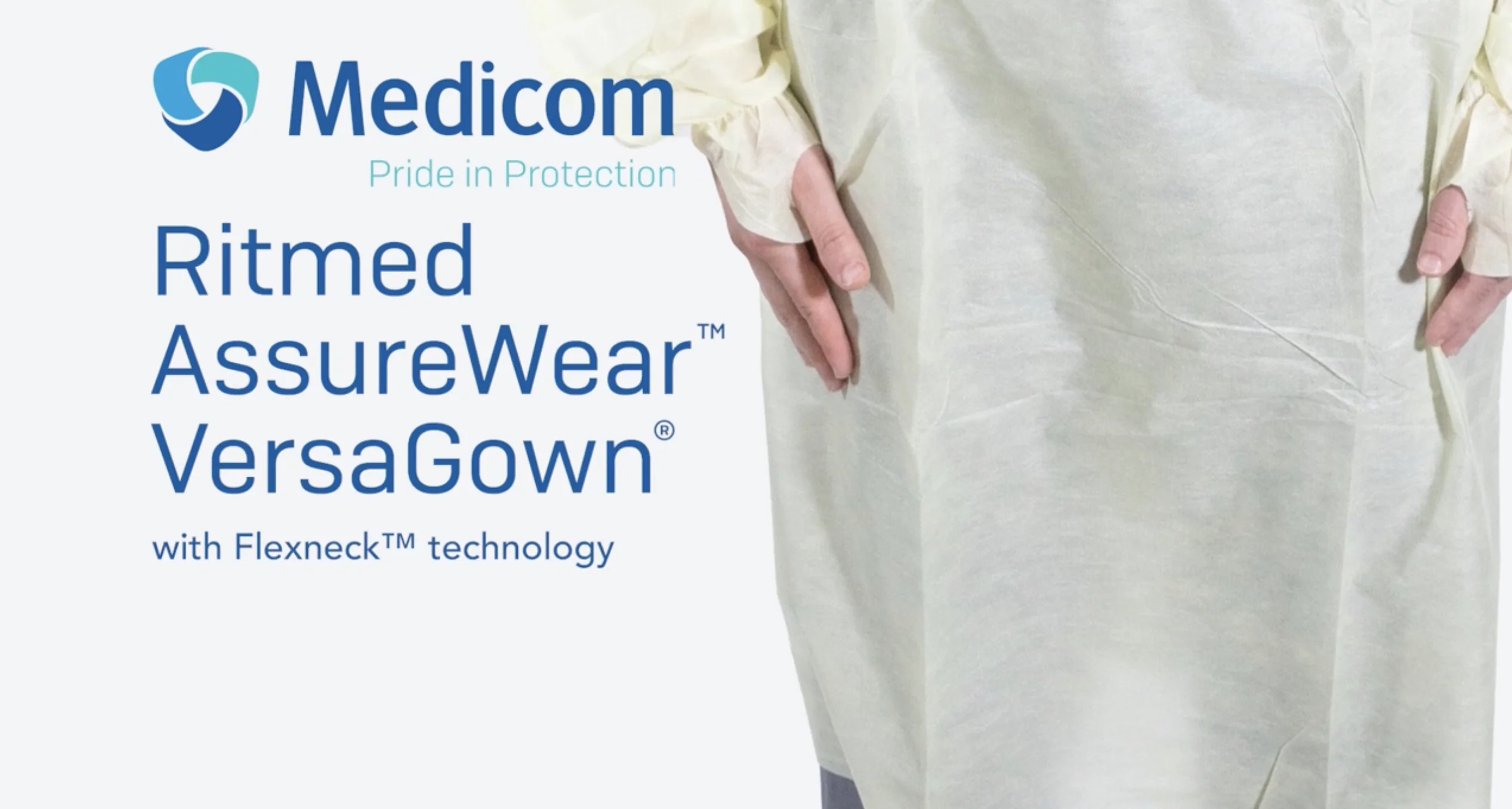
Reduce cross contamination
See how VersaGown™ with Flexneck™ technology can significantly reduce cross contamination and optimize infection control and compliance.
START YOUR FREE TRIAL NOWIt’s time for a gown that puts your needs first.

Quick and easy donning
Double elastic neck closure (Flexneck and Flexneck Plus).

Increased coverage of hand and wrist areas
Elastic cuffs with thumb loops or extended thumb loops.

Easy doffing with reduced risk of cross-contamination
Controlled breakaway removal.

Instant compliance in diverse workflows
Overlapping back with tie-free design.

Innovative design
Freedom of movement without compromising protection. Winner of the Vizient Innovative Technology Award.
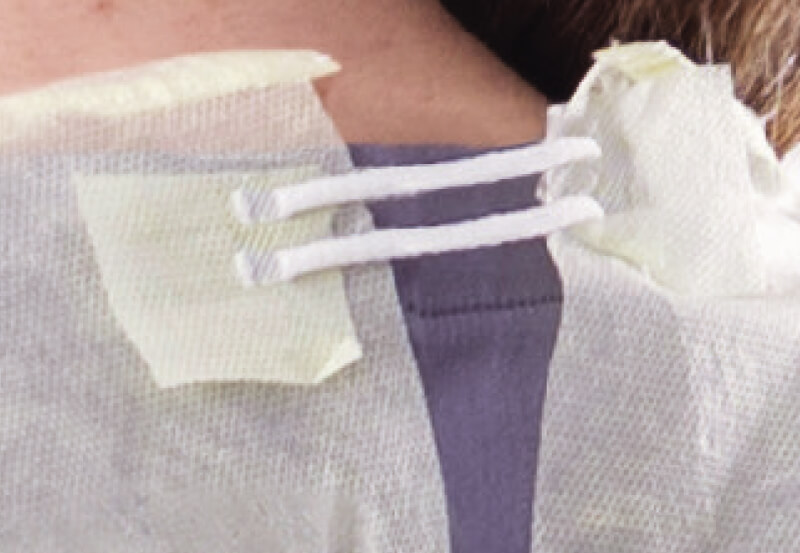
Flexneck Technology
- Allows quick donning with a swift over-the-head motion that prevents the gown from slipping — even when there’s no time to secure the waist ties — reducing the risk of exposure that comes from untied, gaping gowns.
- Ensures fast and easy removal by allowing the gown to swiftly tear away from the body, helping to prevent self-contamination.
Available with the AssureWear VersaGown line.



 English (US)
English (US)



